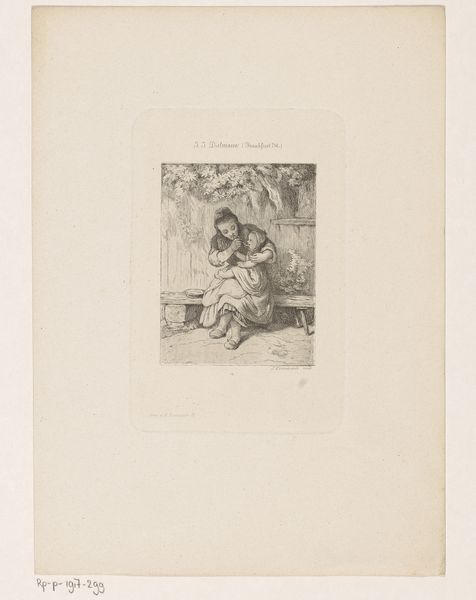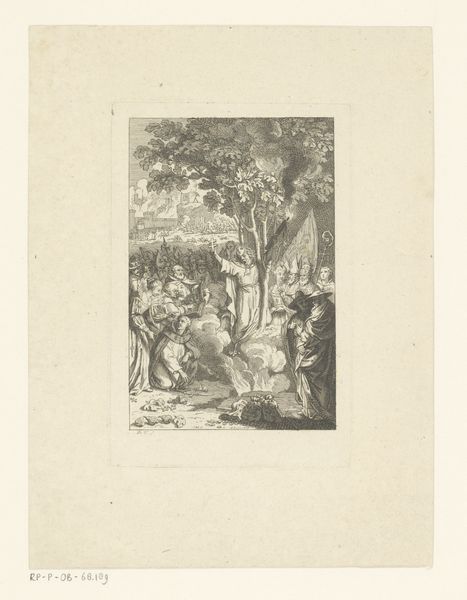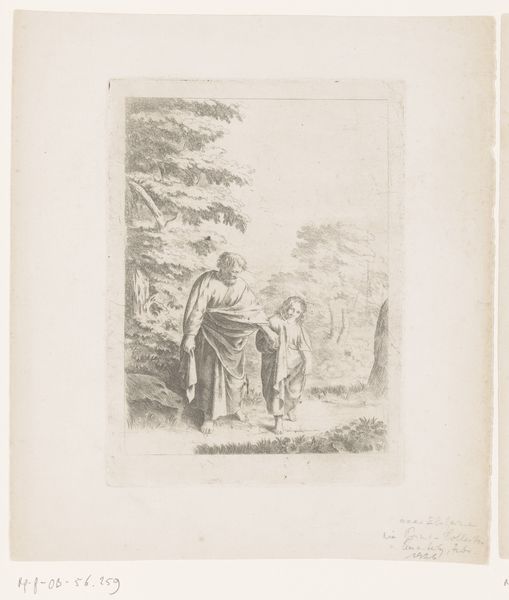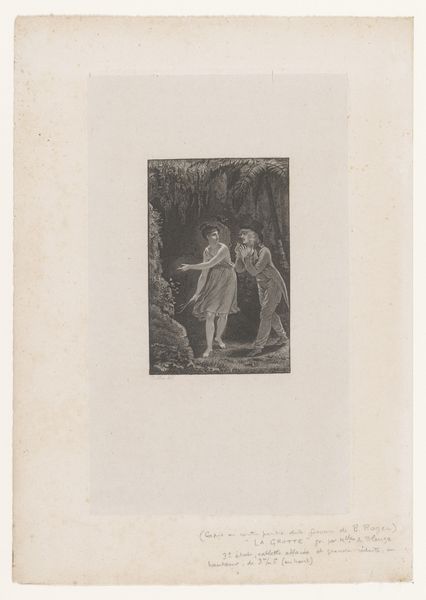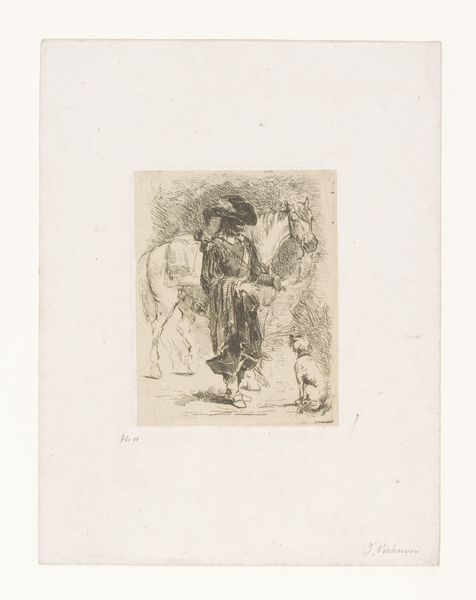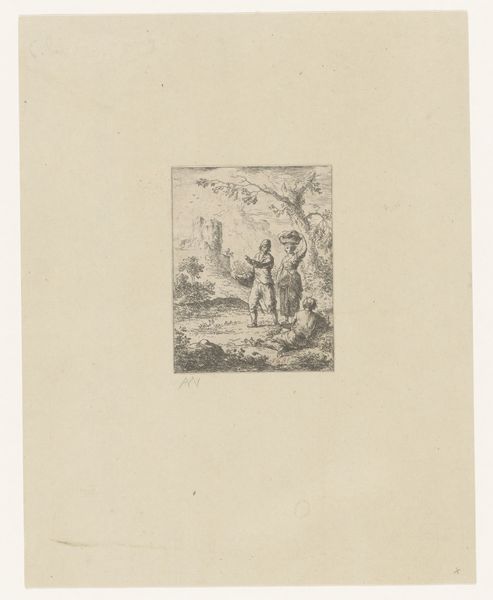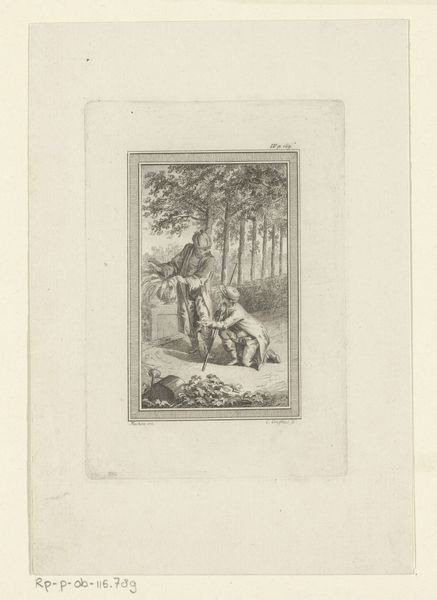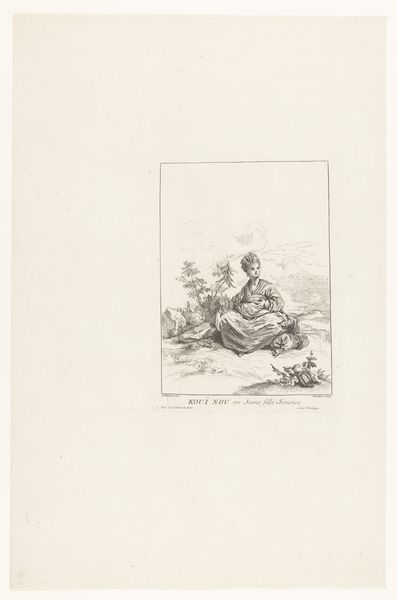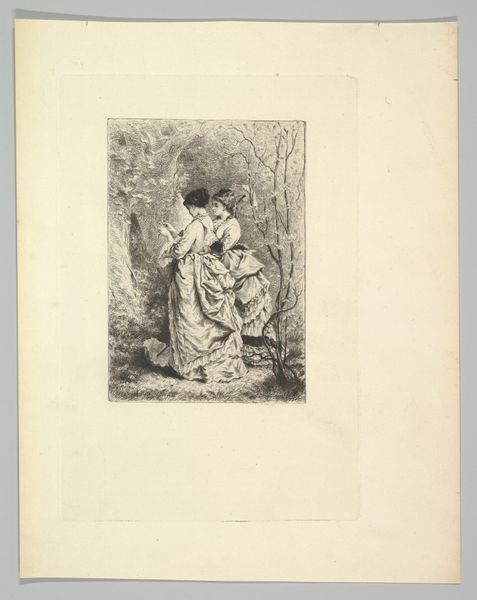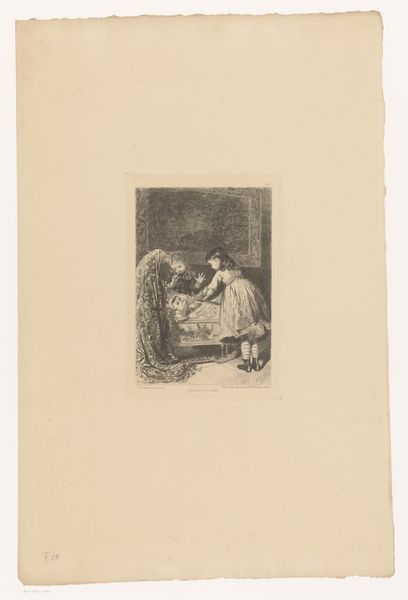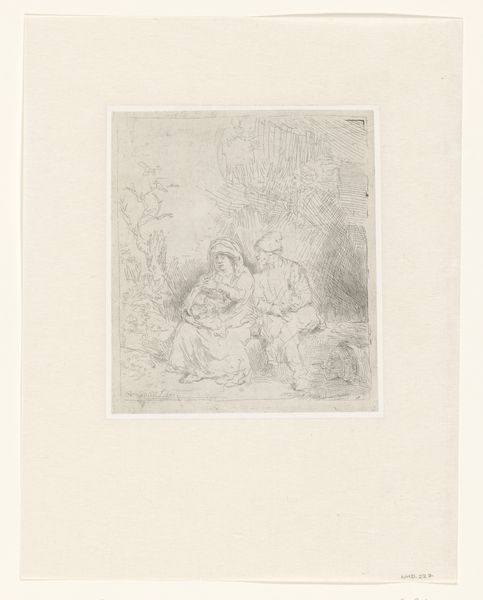
Zwei Kinder vor einer Mauer.Aus der Folge_ Figuren aus dem römischen und neapolitanischen Volke 1793
0:00
0:00
drawing, etching, architecture
#
portrait
#
drawing
#
neoclacissism
#
etching
#
landscape
#
history-painting
#
architecture
Copyright: Public Domain
This delicate etching by Friedrich Rehberg depicts two children before a wall, part of a series capturing figures from Roman and Neapolitan life. The wall itself, an ancient motif, speaks volumes. Walls, since antiquity, have signified division, protection, and the demarcation of space. Consider the walls of Troy, or Hadrian’s Wall—barriers erected to keep the unknown at bay. Yet, here, the wall seems more porous, softened by foliage, suggesting not rigid exclusion, but a backdrop to the children's innocent world. This image carries echoes of similar scenes across centuries, from Renaissance garden idylls to contemporary depictions of childhood. The wall is no longer a harsh barrier, but a shared boundary. It reminds us that symbols evolve, influenced by collective memory and adapted across cultures. Observe how, in each iteration, the wall reflects not just physical space, but the psychological landscape of its time. It evolves as a testament to the enduring human need for both separation and connection.
Comments
No comments
Be the first to comment and join the conversation on the ultimate creative platform.
